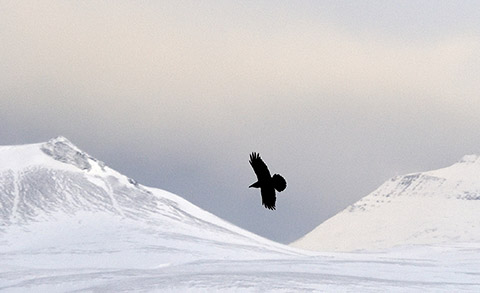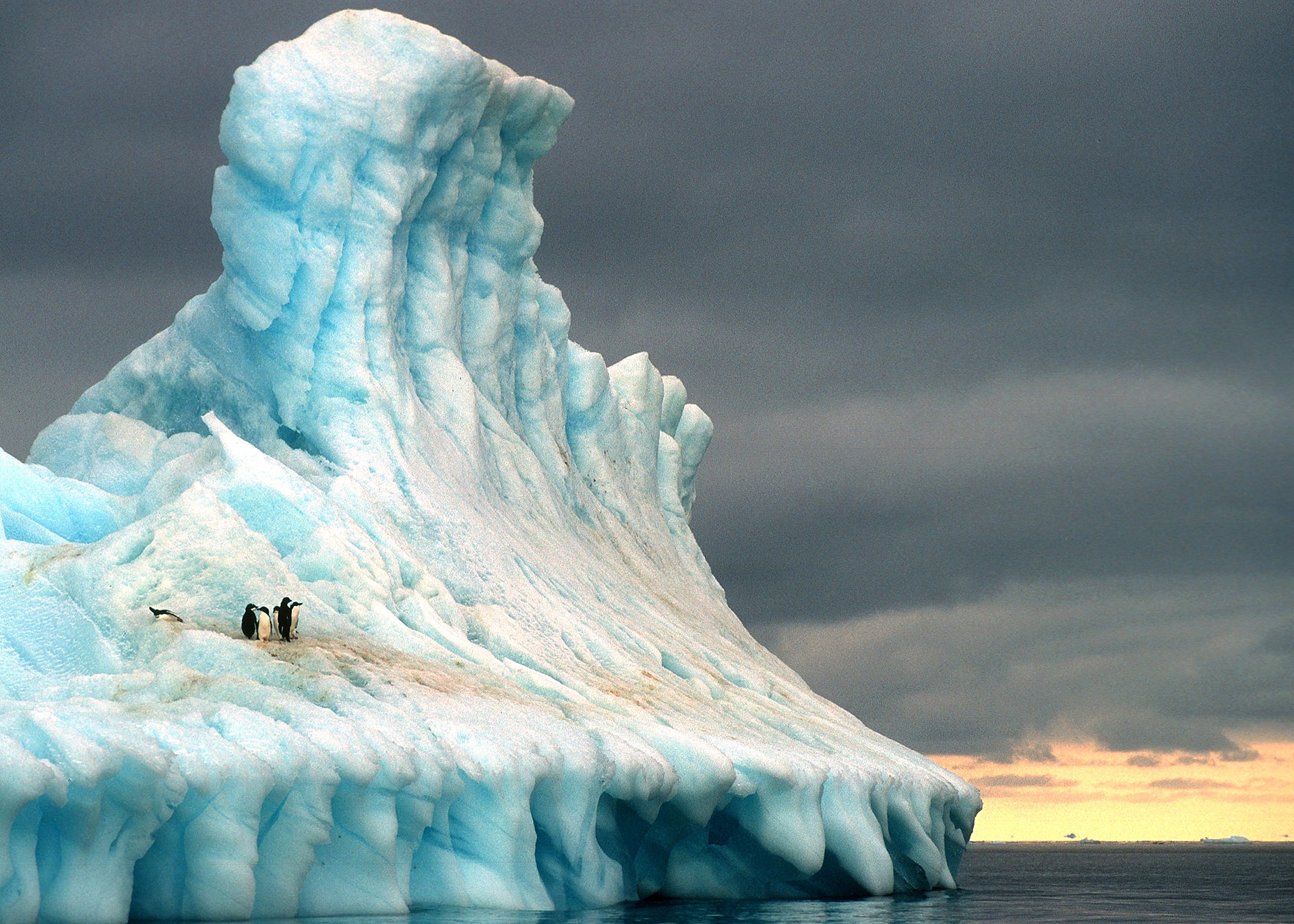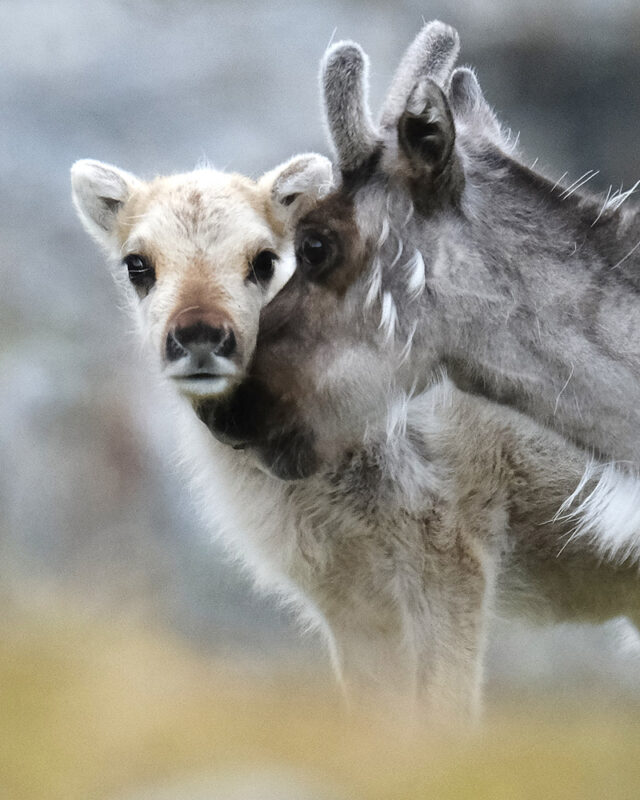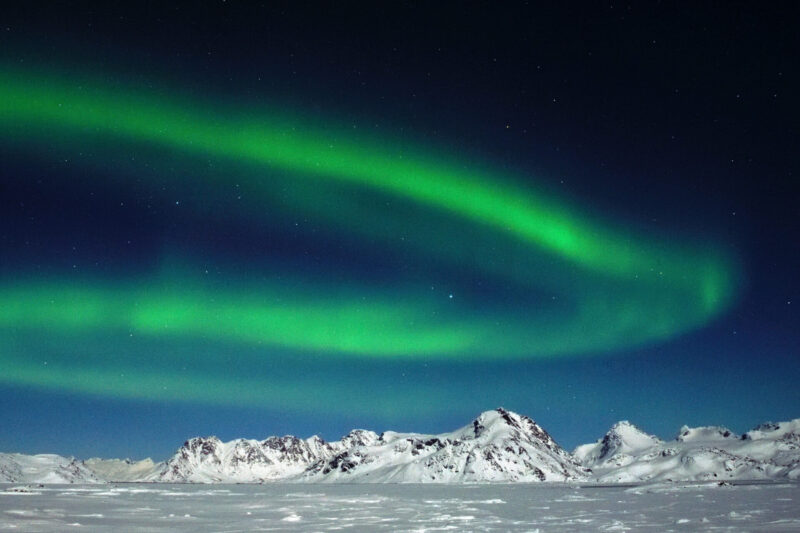
Kees Bastmeijer the new boss at the Arctic Centre
‘No need for a fence around Antarctica’
Antarctica.
A blue and white iceberg rises from the cold ocean like a giant hand. A small group of Adélie penguins huddles together in the foreground. In the background, the sky is yellow with the setting sun.
Svalbard.
A reindeer calf looks straight into the camera. Its eyes are black and shining, a sharp contrast to its light brown fur. Its mother pushes her nose into its neck, as though urging the calf not to look.
Greenland.
The aurora borealis’ bright green light is outlined against a dark blue night sky. Grey mountain tops starkly stand out in the bottom of the picture.
Kees Bastmeijer’s photos from the polar region are stunning. Photography may only be his hobby, but he takes it very seriously. Bastmeijer is strictly looking for beauty in the carefully selected images he takes home. That means the polar bear he encountered on Svalbard is nowhere to be found. ‘He wasn’t beautiful enough.’
Vulnerable
He’s proud of his photos. Still, the new director of the Groningen Arctic Centre isn’t sure if he should share them. He’s worried about what the general public might do when seeing them. ‘They might get inspired to travel to the polar regions, too’, he says. ‘Because they want to see all this for themselves, which to be honest, is completely understandable.’
But that is a problem.
People run marathons on Antarctica and Metallica even had concert there
Bastmeijer knows all too well just how vulnerable the polar regions are; there, the effects of global warming are five times as obvious as here in the Netherlands. Every time someone gets on a plane or boards a cruise ship to see ‘it’ for themselves, they contribute to the devastating pressure on the region. Because their travel leads to CO2 exhaust. Because their boot imprints leave holes in the snow so deep that baby birds can’t escape them when they fall in. Because they bring in plant seeds that aren’t endemic to the region. Because tourists bother animals in order to take a selfie. And because the soot from diesel engines mixes in with the snow.
By themselves, all those little instances aren’t all that damaging, Bastmeijer says. One more cruise won’t harm Antarctica. A single dead chick won’t drive a bird species to extinction and that trampled little path may not look as pristine as we might want, but that’s about it.

Tourists
The problem lies in all of them put together. So far, thirty countries have built more than 110 research stations on the seventh continent. Now that the ice caps are melting, more cruise ships and tourists are visiting the area. In 1990, approximately 4,700 thousand tourists visited the region, while in 2009, this number had risen to 37,000. ‘By 2019, around 75,000 people visited’, says Bastmeijer. ‘We’re expecting this number to rise to about one hundred thousand for the next season.’
Another thing: twenty years ago, people stayed on their boats and would only disembark for a few hours at a time. ‘But these days, people are running marathons, doing helicopter skiing, and stand-up paddling. Metallica even had a concert there!’
And that’s on top of all the plastic that oceanic currents carry to the polar regions and the persistent organic pollutants (POPs) such as dioxins or DDT, that end up on the poles carried by the air or water and accumulate in animals and people.
Legal
Bastmeijer says there isn’t enough awareness of the cumulative damage all these activities do. Most of the activities are legal and tend to fall well within the framework of agreements on the area. But put together, the consequences are worrisome. ‘It’s causing “death by a thousand cuts”’, says Bastmeijer. This problem isn’t limited to just Antarctica or Svalbard tbut occurs in all vulnerable nature preserves. He’s seeing it happen in the Wadden Sea, as well as the oak woods in Brabant, which are in a dire state due to a combination of drought and nitrogen.
People are allowed there, but preferably with zero impact
In short, tourists should leave the poles alone. ‘At the same time, I don’t think I have the right to stop them from coming more than anyone else’, he says. ‘I don’t think we need to put a fence around Antarctica. People are allowed to go there. But it should be regulated in such a way that there’s zero impact.’
All that’s needed are some rules. To come up with those rules or make sure existing rules are implemented, legal experts are needed that can distinguish between what’s allowed and what isn’t, who know how to negotiate with all the countries that have a stake in the polar regions.
It just so happens that Bastmeijer, the new director of the Arctic Centre, is one of those legal experts.

Environmental law
It’s the first time that a legal expert joins the archaeologists, biologists, sociologists, and environmental scientists at the Arctic Centre. It’s also an exciting new step for Bastmeijer. At his previous job at Tilburg university, he was safely ensconced among fellow legal experts. Before that, he worked at the Ministry of Housing, Spatial Planning, and the Environment.
But Bastmeijer brings something to the Arctic Centre that it previously lacked: knowledge of international and national environmental law, with a focus on environmental law. Since 1990, he’s been representing the Netherlands in the group of countries that have either a territorial claim on or serious research interests in Antarctica.
He wants to create a link between his legal knowledge and all the other disciplines at the Arctic Centre. ‘I don’t want to force it obviously; just where it’s possible and wanted.’ His network and expertise can also add an Antarctic component to the centre, which for the past few years was strongly focused on the Arctic region. But he can also help them tell their stories to policy makers.
Scientist
That’s sorely needed. They need to utilise the knowledge coming from the Arctic Centre to protect that frozen wilderness that he fell in love with all those years ago. ‘I remember when I first laid eyes on Antarctica. I woke up, looked through the porthole, and saw that giant iceberg with Adélie penguins on it. It was amazing.’
But he realises that the love he has for the place shouldn’t eclipse his role as a scientist. ‘I have to base my actions on knowledge’, he says. ‘My strength as a scientist lies in supplying knowledge and providing advice based on that. Emotions can endanger that.’
How much are we losing? If you dig deep, it’ll just make you sad
He wants other people to be aware of this, too. All the time. ‘They have to realise that what they do should be verifiable and that they can’t just use arguments that help only them.’
The good news is that international legislation and European agreements are pretty well aligned with his values, such as the conservation of wild animal and plant species, or the ecological preservation of vulnerable areas. Existing national and international rules have been seeing to this for ages.
The bad news is that governments are great at finding legal loopholes to avoid dealing with problems they know they have to do something about. ‘That’s what happened with the nitrogen issue, which is why it’ll now cost 28 billion to solve.’
Sad
That behaviour also means that solutions to the situation in the polar regions, including solutions to the cumulative damage, are struggling to take shape. He finds this frustrating at times. ‘How much are we losing in the meantime? How much will we be able to recover? It’s a difficult thing to figure out, but when you dig really deep, it’ll just make you sad.’
When it comes to international solutions, you have to have patients, he says. ‘You can’t expect to get something done in a single meeting, and you have to invest a lot of time in knowledge and mutual relationships.’
Only then will you get ahead. One victory was the decision, based on a Dutch suggestion made in the spring, that no one is allowed to build a hotel on Antarctica. This discussion had been going on since the nineties, but this year the decision was finally reached. ‘A major event’, says Bastmeijer. ‘And it came on time; in spite of various plans, no one’s built a hotel there yet.’
